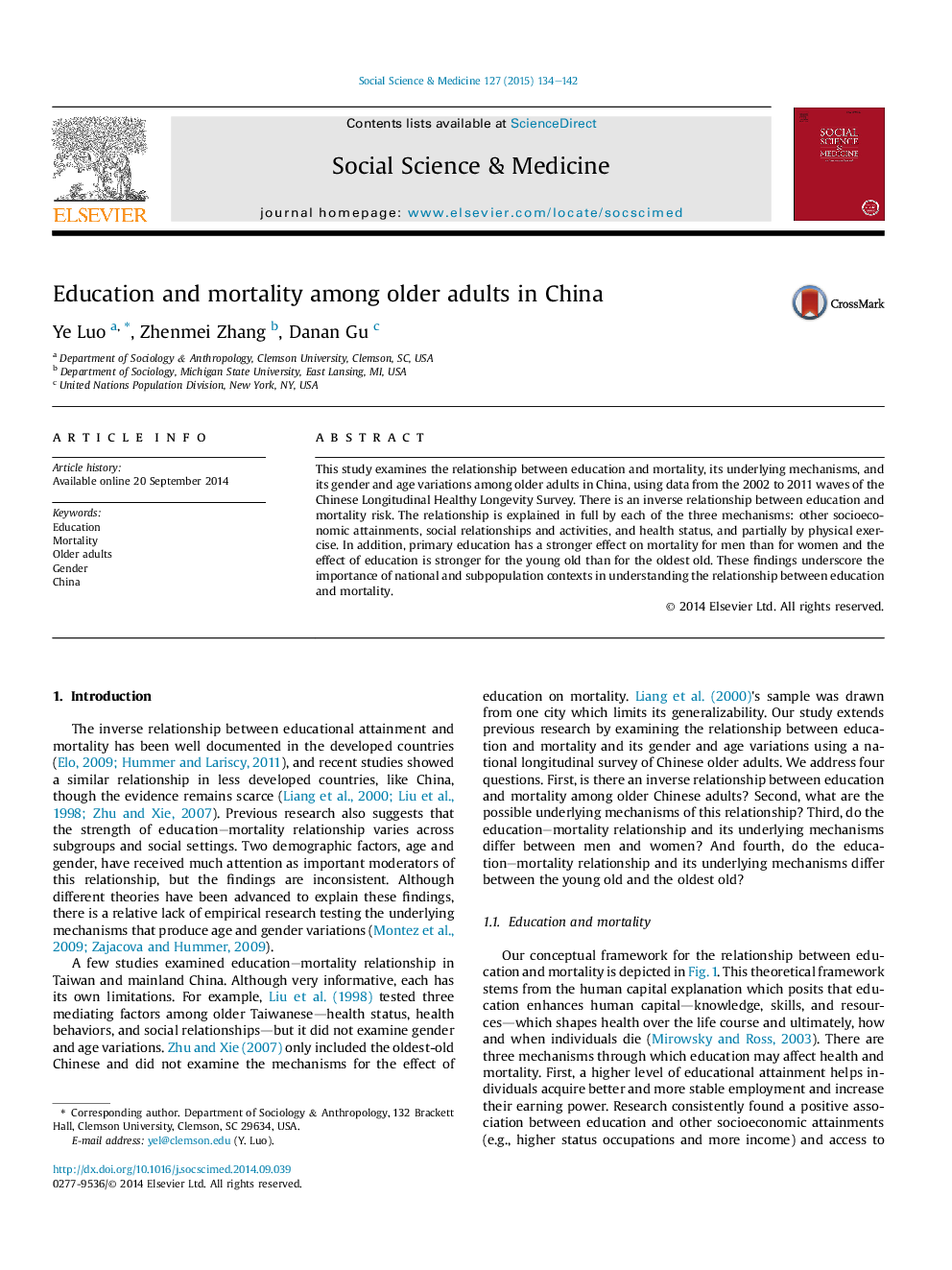| Article ID | Journal | Published Year | Pages | File Type |
|---|---|---|---|---|
| 7333406 | Social Science & Medicine | 2015 | 9 Pages |
Abstract
This study examines the relationship between education and mortality, its underlying mechanisms, and its gender and age variations among older adults in China, using data from the 2002 to 2011 waves of the Chinese Longitudinal Healthy Longevity Survey. There is an inverse relationship between education and mortality risk. The relationship is explained in full by each of the three mechanisms: other socioeconomic attainments, social relationships and activities, and health status, and partially by physical exercise. In addition, primary education has a stronger effect on mortality for men than for women and the effect of education is stronger for the young old than for the oldest old. These findings underscore the importance of national and subpopulation contexts in understanding the relationship between education and mortality.
Related Topics
Health Sciences
Medicine and Dentistry
Public Health and Health Policy
Authors
Ye Luo, Zhenmei Zhang, Danan Gu,
